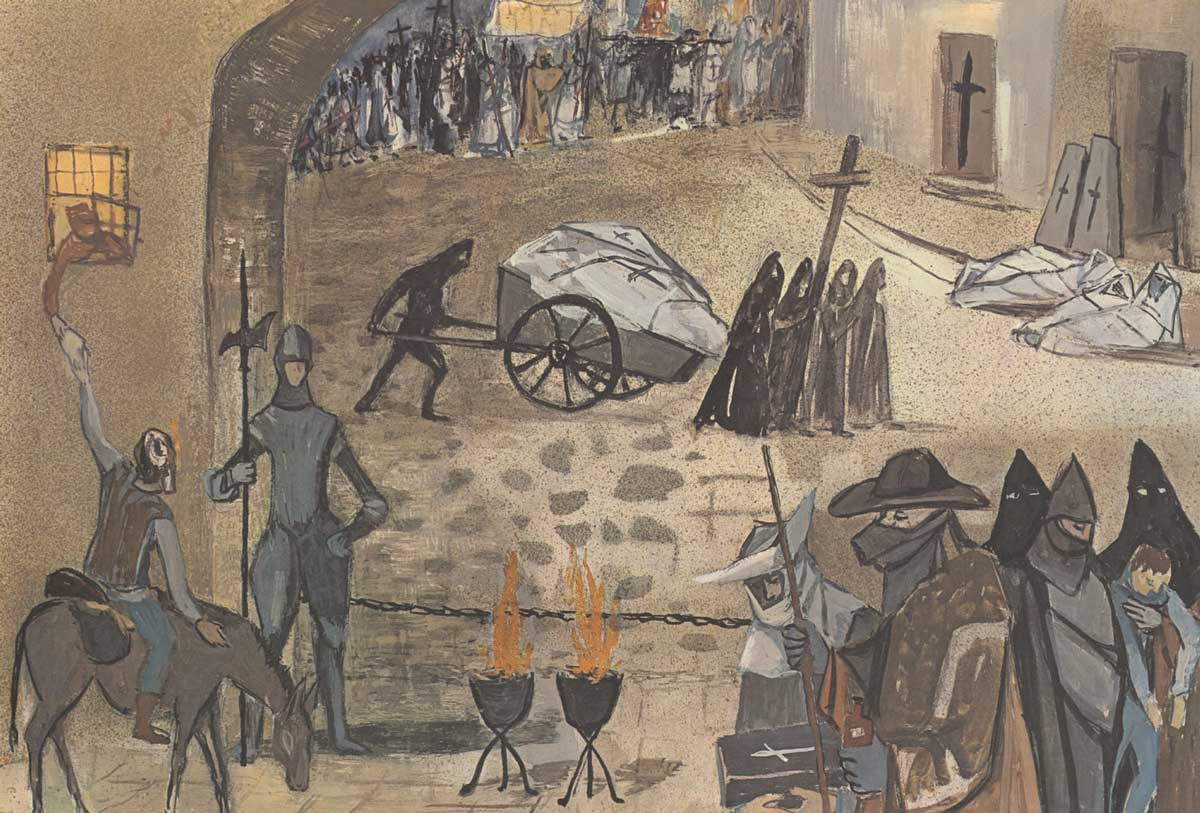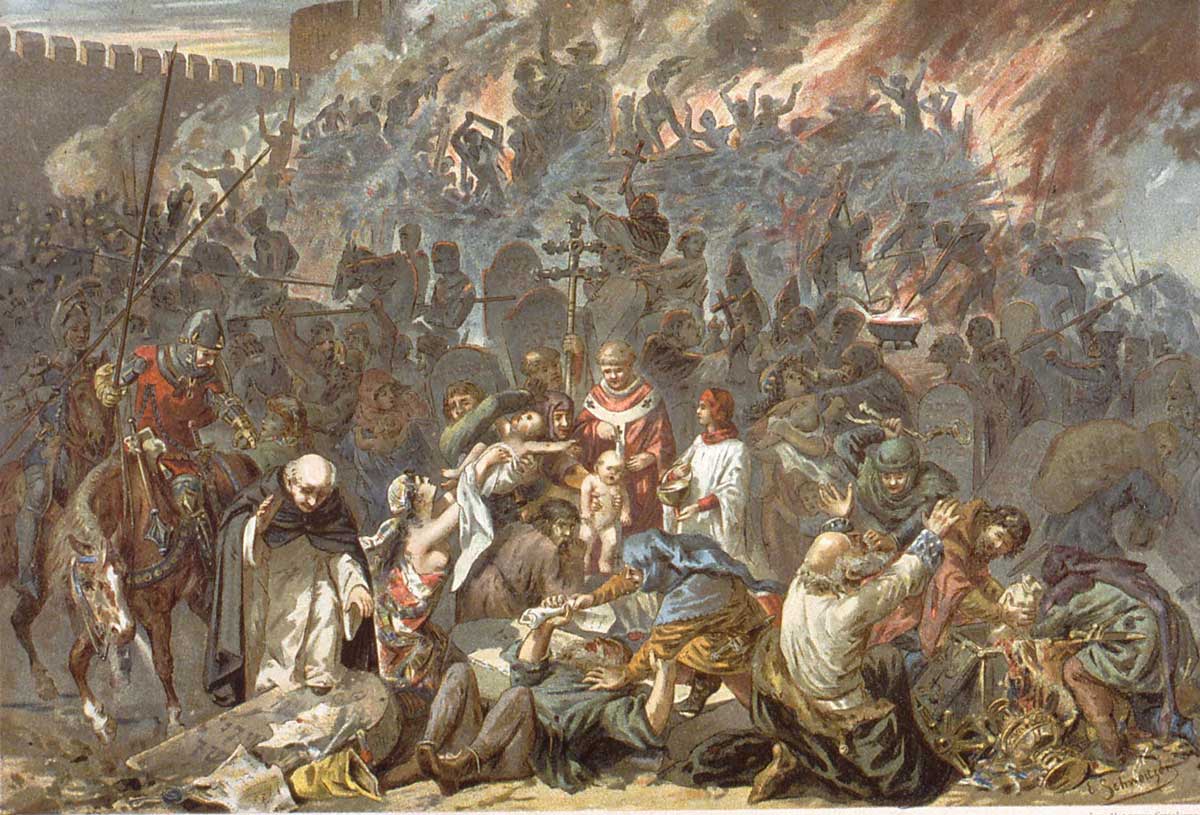Kléber square (part 4/4)
March 29th 2019, by Matthias
This is the continuation and conclusion of our series dedicated to the main square (see the start of the series). By the end of that last note, we still won’t be done with it entirely. Yet, if I entertain myself by telling you all of it in these pages, how can I hope to arouse enough curiosity in you that you will get up from your couch and come frolic with Happy Strasbourg?
Let us discover together the last strata, revealed by the archeologists in 1967, as we were digging in the square to install there an underground parking lot. If you remember well, it is in this parking lot that we started it all. We have come full circle.
The square in the 14th century
In 1349, the plague hits Strasbourg and the ravages will be significant. Distraught in the face of such a spectacle that strikes the rich, the poor, the children, the religious or the heretic alike, men don’t know what to do and will soon need a scapegoat. This is not too much of a surprise: a community that had already been persecuted in the past is about to be the victim of a real massacre this time.
On Valentine’s Day 1349, the inhabitants, led by the bourgeois from the different corporations, create a big stake on which thousands of souls of jewish confession will perish. Accused of being responsible for the evil that struck the city, the jews will be “punished” by the collective madness. Here is an episode that doesn’t do much to enhance mankind’s image.
Strasbourg had been showing the example many times before though, by welcoming and protecting jewish populations, that were then often persecuted elsewhere. The Stettmeister and Ammeister (the political leaders of the city) had granted the Jews asylum and protection, obviously not for free: a heavy tax was levied on their activity as moneylenders. It is then easier to understand why they became a target. Let’s imagine for a moment that you get indebted in early February and that your lender dies on the 14th of the same month. Practical, isn’t it?





